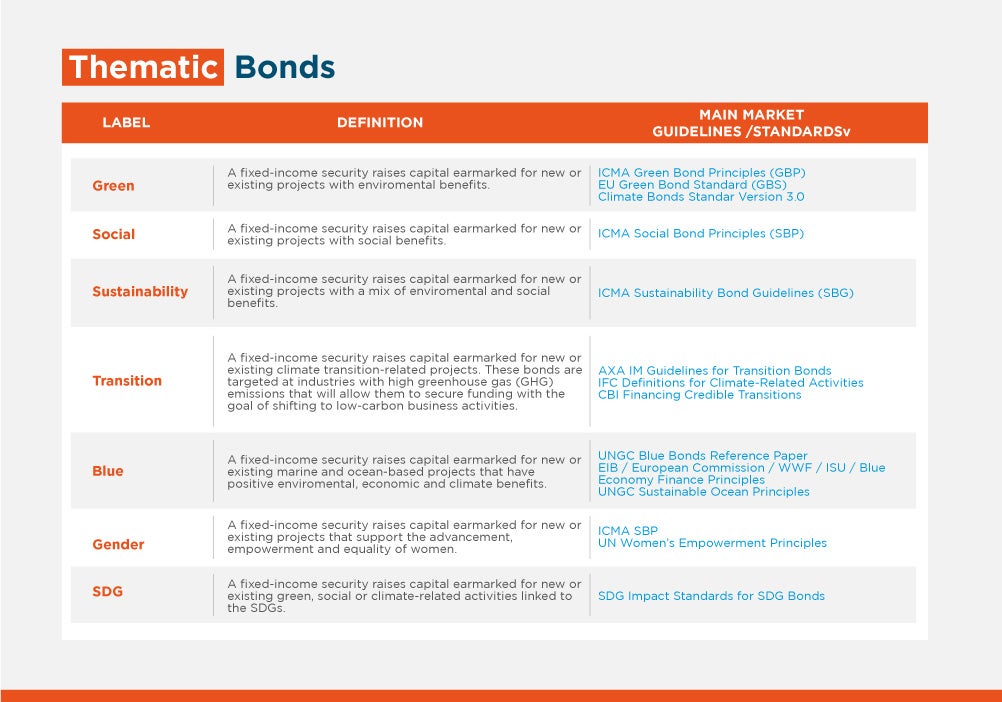Why Thematic Bonds May Be a Hit in Latin America & Caribbean

In the not-so-distant past, mainstream investors believed sustainability investing was a fringe topic, and firmly proclaimed that, in the context of a global crisis, economies would always revert to the fundamentals. How quickly things change.
Environmental, social, and governance (ESG) investing, targeting companies that seek returns alongside social impact, has grown apace over the past year and shows no signs of abating. Bloomberg Intelligence conservatively estimates that at a 15% annual pace of growth – half the actual rate of the last five years – ESG assets under management will hit $53 trillion by 2025, representing more than a third of the projected total of $140.5 assets under management.
Equities have traditionally dominated the ESG market and will continue to do so, but the debt side of the equation will offer the most innovative solutions in addressing sustainability challenges. Enter green, social and sustainable bonds, commonly called thematic bonds.

This kind of bond is proving resilient in times of crisis as well as appealing when it comes to addressing development agendas. Governments and businesses alike are seizing the opportunity to issue thematic bonds to fund projects that address the challenges of climate change, national commitments under the Paris Agreement, and the UN’s Sustainable Development Goals (SDGs).
The global thematic bond market is expanding rapidly with $700 billion worth of sustainable debt issued in 2020 alone; this is nearly double the previous year’s volume.
While Europe has consistently represented the largest share of thematic bond issuances, Latin America and the Caribbean (LAC) has been the region with the fastest growth and investor interest is moving increasingly to developing markets. What explains this shift? We see three reasons why LAC’s private sector is poised to capitalize on this nascent market:
- LAC shows high levels of sustainable investment opportunities, coupled with favorable yields. Despite its fast growth, LAC is undeniably lagging global volumes in terms of thematic issuance. A large number of players want to get in the game and LAC has appealing features for ESG investors: it offers diversification and attractive returns.
- There’s greater clarity surrounding standards and transparency over use of proceeds: Transparency and integrity are critical to attracting private investors. The thematic market has evolved from self-labelling bonds to an externally reviewed debt. ICMA principles and Climate Bond Standards – for green bonds – have helped standardize the market, providing a framework for the use of proceeds, project evaluation and selection, management of the proceeds and reporting.
- Private sector issuers are showing appetite for innovation: Until recently, the public sector dominated thematic bond issuance and accounted for two-thirds of total cumulative bond volume. The tide is now turning, a year-to-date private sector thematic issuance, at some $10 billion, is surpassing public sector issuance, at about $7 billion.
Now, the question is how thematic bond issuers should position themselves now for this opportunity.
The public sector has already laid the ground by establishing market standards and participating in bond issuances. For example, Chile issued a green bond Guideline in 2018 and became the first sovereign to issue certified green bonds in LAC. Stock exchanges in Colombia, Costa Rica and the Dominican Republic have published green bond guidelines.
Financial supervisors are also taking steps to integrate ESG into investment decision processes – for example, pension funds in Chile must report on how they incorporate ESG and climate risk factors into their investment policies. Gender bonds– a sub-class of social bonds – have exploded in the region, and IDB Invest structured and subscribed a $100 million bond issuance by Banco Davivienda, the world's first issue of a gender-linked bond with incentives based on achieving outcomes. All these developments are contributing to making ESG more mainstream.
IDB Invest recently launched an executive guide, Financing Sustainability through Capital Markets, which outlines a practical roadmap for private issuers looking to issue thematic bonds while aligning with market best practices.
The take-away from the guide is that internal ESG capacity should be adequately defined and in place before an issuance; that thematic bond must be based on clear impact targets and achievable goals and, very importantly, the issuers must commit to close monitoring and transparent and regular reporting on performance to build confidence.
Recent end-of-year 2020 data from Europe and North America illustrate the market benefits of getting these fundamentals right: oversubscription ranged between 3.5X – 4.2X and that with a tighter compression spread compared with plain vanilla bonds, evidence that suggests these bonds enjoy a greenium, or pricing benefits, compared to plain vanilla counterparts.
The good news is that IDB Invest is ready to work with issuers to ensure that they can handle the process. IDB Invest’s guide includes a five step process on issuing from design to reporting, and includes a Readiness Assessment Matrix to evaluate an issuer’s preparedness. Tapping into this latest wave of financial innovation, coupled with tools to design a successful issuance, will help the region emerge stronger from the pandemic.
LIKE WHAT YOU JUST READ?
Subscribe to our mailing list to stay informed on the latest IDB Invest news, blog posts, upcoming events, and to learn more about specific areas of interest.
Subscribe


